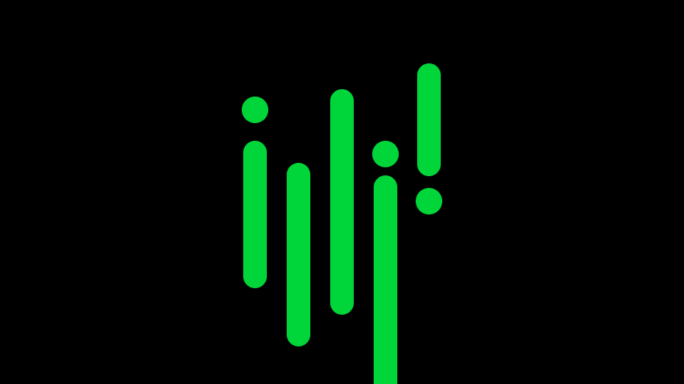Making Tax Digital for Income Tax: The complete guide
Discover everything you need to know about MTD for Income Tax and get your business ready for changes coming from April 2026.

Making Tax Digital (MTD) is the government’s ongoing plan to bring tax accounting and collection into the 21st century.
As the name suggests, it does this by legally requiring the use of software. As such, it also requires key accounting records relating to tax are kept digitally.
In return, it’s possible to see throughout the year how much tax you owe before payment becomes due at the usual times. This aids better cash flow calculations, among other things.
And the use of accounting software can be revolutionary, reducing or even removing much of the drudgework of administration. This frees up people to do more of what they love within their business.
In this article, we take a look at Making Tax Digital (MTD) for Income Tax and try to answer some questions by way of an introduction for the general reader.
We start with a brief overview of MTD before diving into some questions and answers to help you navigate what MTD for Income Tax will mean for your business.
It should be noted that we already have blogs that look in-depth at certain kinds of business impacted by MTD for Income Tax:
- MTD for Income Tax: What Making Tax Digital means for sole traders
- MTD for Income Tax: What landlords need to know
- MTD for Income Tax: What accountants and clients need to do
In this article, we cover the following:
Background on Making Tax Digital
1. What is Making Tax Digital for Income Tax in a nutshell?
2. Who does MTD for Income Tax affect?
3. What are MTD for Income Tax quarterly reports?
4. What are MTD for Income Tax end of period statements (EOPS)?
5. What is the MTD for Income Tax final declaration?
7. When do I pay my tax and National Insurance contributions under MTD for Income Tax?
8. How do I sign up for MTD for Income Tax?
9. Is Self Assessment ending because of MTD for Income Tax?
10. What’s the MTD for Income Tax pilot?
11. Is MTD for Income Tax delayed?
12. Is there free software for MTD for Income Tax?
13. Can I use spreadsheets for MTD for Income Tax?
14. What’s the MTD for Income Tax threshold?
15. How long do I have to keep my old accounting records as part of MTD for Income Tax?
16. Where can I learn more about MTD for Income Tax?
Final thoughts on MTD for Income Tax
A guide to Making Tax Digital for Income Tax
Need help to get your business ready for Making Tax Digital? Download this free guide to learn about MTD for Income Tax and get prepared now.

Background on Making Tax Digital
The first wave of Making Tax Digital became law in 2019 when MTD for VAT was introduced. This is expanded out to more businesses in 2022.
But it’s four years later – in April 2026 – when arguably one of biggest changes is set to arrive.
MTD for Income Tax will affect millions of sole traders and landlords, with those earning over £50,000 falling within scope from 2026, and those over £30,000 from 2027.
It’s being called the biggest shake up in tax for a generation. But even this might be too conservative an estimate of the impact it will have for many people.
You owe it to yourself to get ready sooner, rather than later.
To be clear, Making Tax Digital for Income Tax is known by several titles, but they all refer to the same thing:
- Making Tax Digital for Income Tax
- Making Tax Digital for Income Tax Self Assessment
- MTD for Income Tax
- MTD for ITSA
You might also hear it referred to as ‘phase 2’ of MTD, but care should be taken because this means different things to different people.
1. What is Making Tax Digital for Income Tax in a nutshell?
Here is MTD for Income Tax summarised in as few words as possible:
- It will affect sole traders and landlords who currently use the Self Assessment income tax system.
- In the first phase, it will only affect those listed above with a total income over £50,000.
- In the second phase, it will affect those earning over £30,000.
- For each sole trader business, and for total rental income, it requires at least 4 x quarterly reports and an end of period statement (EOPS).
- Each individual must submit a final declaration by 31 January following the end of the tax year.
- MTD for Income Tax’s requirements replace the need for a Self Assessment return.
We look into all of this in more depth below.
2. Who does MTD for Income Tax affect?
MTD for Income Tax will affect any of the following individuals that have an income over £50,000/£30,000 and who currently use the Self Assessment system:
- Sole traders.
- Landlords receiving rental income (including furnished holiday lettings, and foreign property).
- Partners in unincorporated partnerships, or partnerships where an incorporated business isn’t one of the partners.
The thresholds will apply to the income of an individual, rather than to individual businesses.
For example, if an individual is both a sole trader and also a landlord receiving rental income, then the income from these two businesses is added together to determine if that person crosses the threshold.
Similarly, if an individual owns several sole trader businesses then the income from each should be added up to see if that person crosses the threshold.
If the individual does not cross the threshold then they should continue using submitting a Self Assessment tax return, as currently is the case.
3. What are MTD for Income Tax quarterly reports?
Quarterly reports are a regular requirement of MTD for Income Tax. They help you better understand your tax and National Insurance liability across the year.
The rules are simple. During the accounting period for any business you own, at a minimum you’re required to submit reports every three months to HMRC using software.
Landlords need to submit these reports for their rental income but only one is required, regardless of how many properties are owned and from which rent is collected.
It has to be emphasised that four reports each accounting period is a minimum. You can submit more if you think it will assist your accounting.
A business that earns more than £50,000 that aligns to the tax year (6 April – 5 April) would need to submit at least the following reports for the 2026/27:
- 1st: Due by 5 August 2026 (covers 6 April 2026 – 5 July 2026)
- 2nd: Due by 5 November 2026 (covers 6 July 2026 – 5 October 2026)
- 3rd: Due by 5 February 2027 (covers 6 October 2026 – 5 January 2027)
- 4th: Due by 5 May 2027 (covers 6 January 2027 – 5 April 2027)
The reports will contain information about your accounting such as your income, allowable expenses, and any adjustments or reliefs.
There’s no legal requirement for the reports to be accurate.
But doing so will mean HMRC is able to best estimate your tax and National Insurance liability, so you can be sure about cash flow and the amount of money that you’re putting away to pay your eventual tax bill.
These reports might sound foreboding but good accounting software will automate much of it. It’s likely all you will have to do is review the information before submitting it.
Reports need to be submitted in this way for each business you own, and for any property income. This could mean submitting several reports across a year.
4. What are MTD for Income Tax end of period statements (EOPS)?
The EOPS is effectively a fifth and final report for each sole trader business you own, or for property rental. It is submitted using software following the end of your accounting period, and by 31 January each year at the very latest.
Using the EOPS, you finalise the taxable profit or loss for a business, or for your total rental income (and as with the quarterly reports, landlords need only create a single EOPS if they own and collect rent from multiple properties).
But it should be emphasised that, if you have several businesses, each will require the submission of its own EOPS.
5. What is the MTD for Income Tax final declaration?
Also known as crystallisation, by no later than 31 January following the end of the tax year (5 April), you need to make a single final declaration.
That means bringing together all the data including business and non-business income needed to finalise your tax position and reach your final tax liability.
The final declaration applies to you as an individual, so you only need to submit one, regardless of whether your income comes from multiple sole trader businesses and/or property rental.
It’s worth noting that, unlike EOPS, the final declaration has no bearing on the accounting periods of any business you run. Instead, its deadline is fixed each year on 31 January.
6. Can my accountant do quarterly reports, EOPS and the final declaration for me as part of Making Tax Digital?
Yes. But as with the current Self Assessment system, you will need to review and sign the final declaration.
You will also need to ensure your accounting software is digitally linked to that of your accountant, and let HMRC know when you sign up that your accountant will act on your behalf.
Speak to your accountant ahead of time to ensure this is the case.
7. When do I pay my tax and National Insurance contributions under MTD for Income Tax?
You should pay any outstanding tax due by 31 January following the end of the tax year on 5 April. You will know the amount due because of your final declaration.
If you pay on account then a further payment will then be due by 31 July.
8. How do I sign up for MTD for Income Tax?
Right now this isn’t possible outside of the pilot scheme, which is limited to certain individuals (see ‘What’s the MTD for Income Tax pilot?’ below).
We’ll update this blog at such time that HMRC begins open the full MTD for Income Tax scheme for registrations.
9. Is Self Assessment ending because of MTD for Income Tax?
No. For those who are required to use MTD for Income Tax, the final declaration replaces the need to file a Self Assessment return.
However, for everybody else required to file a Self Assessment return and who are outside the scope of MTD for Income Tax, there will be no change. Self Assessment will continue to be used.
This includes not only those declaring income – for example, interest on savings – but also those who claim certain tax reliefs or benefits, or make charity donations even though they have no income outside of their salaried employment and where all income tax is paid by their employer through PAYE.
10. What’s the MTD for Income Tax pilot?
HMRC is running an optional pilot programme that you can sign up to in order to take part in MTD for Income Tax between now and its mandation in April 2026.
As with other HMRC pilots, there are limits on who can join. But as we get closer to the date of mandation for MTD for Income Tax, we can expect some of the limitations to be relaxed.
For now, the pilot is limited to UK residents who are registered for Self Assessment, and who are either sole traders with income from only one business or landlords who rent out UK property (or both).
Additionally, you can’t join the pilot if you’ve received any of the HMRC grants for coronavirus (such as the Self-Employment Income Support Scheme).
If you have income from any other sources or taxable payments you make or claim tax relief on then, again, you can’t sign up for the pilot.
You’ll need software compatible with the MTD for Income Tax pilot programme. Currently, there are only a few examples. This should change as we approach April 2026 and April 2027.
11. Is MTD for Income Tax delayed?
MTD for Income Tax was intended to be among the first of the Making Tax Digital schemes, back in 2015.
Obviously, that did not happen. Brexit, the pandemic, consultations with stakeholders by HMRC, and other factors, all contributed to Making Tax Digital being fundamentally rescoped by the government.
The scheme has been delayed twice, most recently following an announcement from the government in December 2022.
The two-phased launch will happen firstly in April 2026 for sole traders and landlords earning over £50,000, and secondly in April 2027 for those earning over £30,000.
12. Is there free software for MTD for Income Tax?
The government has said it expects there will be “free software for businesses with the simplest tax affairs” available in time for MTD for Income Tax. This should be used for the first full accounting period following 6 April 2026.
Notably, no free software was made available for MTD for VAT by either HMRC, although some was available from financial institutions and some software vendors.
The government considers the purchase of compatible VAT accounting software to be a legitimate business expense that businesses are expected to pay.
13. Can I use spreadsheets for MTD for Income Tax?
The use of spreadsheets will be allowed for sole traders and landlords that fall within the scope of MTD for Income Tax.
However, there are complicated guidelines around the cutting/copying and pasting of data, which falls under the digital linking rules. In short, while spreadsheets can be used for MTD, care must be taken.
You’ll will be breaking the law if you copy and paste values from a spreadsheet into your accounting software to complete a quarterly report, EOPS or final declaration, for example. Instead, the link between the spreadsheet and the accounting software must be both digital and automated, according to the digital linking rules.
Spreadsheets have inherent limitations, such as poor data security measures, and the ease at which a simple mistyping can accidentally erase a critical formula. You must maintain your digital records for five years as part of the income tax rules.
Can you be sure that you’ll be able to do this if you’re using spreadsheets?
Those using a spreadsheet for MTD for VAT require bridging software to file their returns with HMRC. This is available from software vendors. The same kind of software is likely to be available for MTD for Income Tax, and will probably link into a broader cloud-enabled service.
However, most experts agree that it’s simpler easier and more effective to use cloud accounting software.
14. What’s the MTD for Income Tax threshold?
The first phase of MTD for Income Tax will apply only to self-employed businesses’ income and/or property income of more than £50,000.
The second phase will apply to those earning over £30,000.
15. How long do I have to keep my old accounting records as part of MTD for Income Tax?
This doesn’t change compared to the existing Self Assessment system. You should keep records for at least five years.
16. Where can I learn more about MTD for Income Tax?
HMRC is running webinars about MTD for Income Tax. The MTD for Income Tax pilot government pages also provides some information about how the scheme will work.
The government’s overview of Making Tax Digital contains higher-level information about its plans.
We’ll share more details on Sage Advice whenever any new information becomes available, including guidance on how to comply.
Final thoughts on MTD for Income Tax
Key to getting ready for MTD for Income Tax is to stay ahead of the curve when it comes to learning about it, and also adoption.
Aim to sign up as soon as it becomes possible. This way you’ll be ahead of the millions of others doing the same thing, and who are likely to cause substantial congestion when it comes to receiving support from HMRC and also their software vendor.
If you need to switch to using accounting software to comply with MTD for Income Tax then this is also best done as soon as possible, so you can adapt and improve any of your admin processes ahead of the legal requirements of MTD for Income Tax coming into force.
Cloud accounting software will be updated in time, and you can start using it today.
MTD for Income Tax might seem like a big change but by splitting out the required tasks into chunks, you can introduce the requirements gradually for the benefit of you—and your business.
Editor’s note: This article was first published in September 2021 and has been updated for relevance, following the delay to Making Tax Digital for Income Tax.
A guide to Making Tax Digital for Income Tax
Need help to get your business ready for Making Tax Digital? Download this free guide to learn about MTD for Income Tax and get prepared now.







Ask the author a question or share your advice